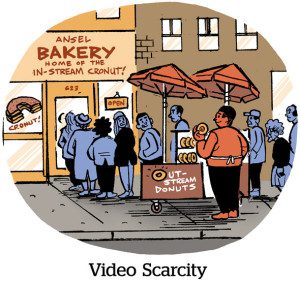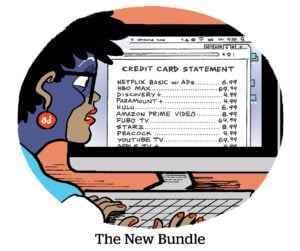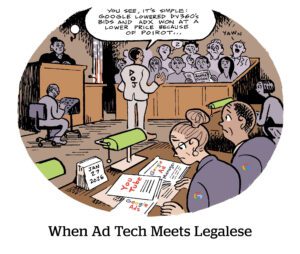Here’s today’s AdExchanger.com news round-up… Want it by email? Sign up here.
Floor Plan
The Trade Desk will start undercutting SSP price floors in its bids starting next month, Insider reports.
Publishers often set minimum asking prices for their ad inventory. But their SSPs then typically tack on their own costs on top of these price floors. A publisher setting a minimum bid price of $1, for example, might have its inventory sold by an SSP that charges $1.50 – and then keeps the additional $0.50 for itself.
TTD argues that this practice artificially inflates the minimum asking prices set by publishers, and that SSP prices are not reflective of the real value of these ad impressions.
Furthermore, SSP fees vary widely, meaning the price for the same publisher inventory differs depending on which supply-side platform is being used to purchase the inventory. TTD says ignoring the extra fees charged by SSPs could standardize publisher price floors if other DSPs follow suit.
Like TTD’s OpenPath, which allows advertisers to buy ads directly from publishers, the move reflects its growing influence on the sell side of the ad tech ecosystem and its efforts to cut out SSPs.
But, as ad tech expert Ari Paparo tweeted, “Publishers can still choose to ignore these lower bids.”
An AI Blitz
Amazon is building AI features for Thursday Night Football with graphic overlays to help viewers follow the live gameplay, TechCrunch reports.
Among the new features: A red orb that lights up players on defense about to run in for a blitz, a green orb that highlights players open for a pass and lines that indicate the likelihood that a kicker will make a field goal.
How the heck does Amazon know that? Well, it has what it calls a “machine-learning neural network” that detects speed and direction to determine whether a particular player is about to charge the opposing team.
“The ML model was tested on 35,000 plays and will continue to get smarter,” says Sam Schwartzstein, Prime Video’s analytics expert for Thursday Night Football.
Certainly sounds creepy, but hey, it’ll help fans follow the game.
Amazon tested its new AI chops during this week’s preseason game and expects a full rollout in time for the start of the season on September 14.
Amazon already has a handful of other AI features, which launched last year, including live stats and two-minute-long recap clips.
Faking It
The mainstreaming of AI is fueling a deepfake porn boom – and Big Tech companies are complicit, according to Bloomberg.
Google Search is the largest driver of traffic to deepfake porn sites. Between 2020 and 2023, traffic to the top 20 deepfake sites increased by 285%, with Google driving the majority of visits.
Because Google doesn’t proactively de-index deepfake sites, the victims have to undergo the onerous process of filing takedown complaints.
Meanwhile, Amazon, Microsoft and Cloudflare’s services and technology are used to create and host deepfakes. The former Twitter, true to its new name X, is widely used to share adult content, including deepfakes. And both Google’s and Apple’s app stores feature apps designed for creating deepfakes.
The popularity of deepfake porn is outpacing attempts by governments to regulate it. There are no federal laws criminalizing nonconsensual deepfakes, and only 13 states have passed such laws.
As a result, activists are pushing for the tech industry to self-regulate. Some companies, such as Stability AI, which bans the use of adult content for training its AI tech, are leading the way. But more can be done to address this growing problem.
But Wait, There’s More!
AI chatbots are helping web content farms copy content from top publishers. [Bloomberg]
Warner Bros. Discovery will add live news from CNN to its new streaming service, Max. [CNBC]
Meta is failing to moderate promotions of criminal activity on Instagram. [404 Media]
Why the future of digital-only local news may be small and email-based. [Press Gazette]
LinkedIn adds newsletter features to incentivize sign-ups. [Search Engine Journal]
GroupM partners with SeenThis to help advertisers reduce their carbon emissions. [Adweek]
You’re Hired!
ReachTV appoints George Sealey as EVP of development and production. [release]
Swedish electrical vehicle company Einride names Corinne Aaron as its new CMO. [release]
OOH media agency Talon brings on Alice Date as its first global group sustainability lead. [release]















